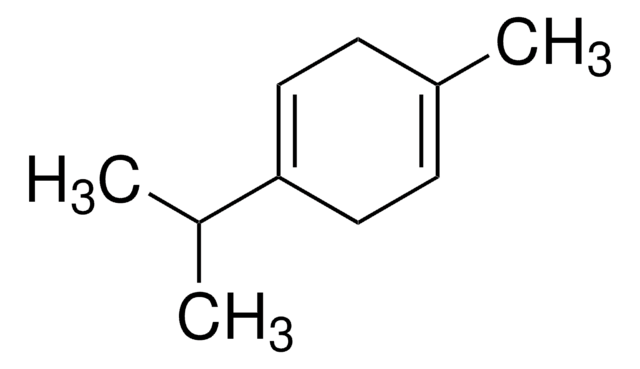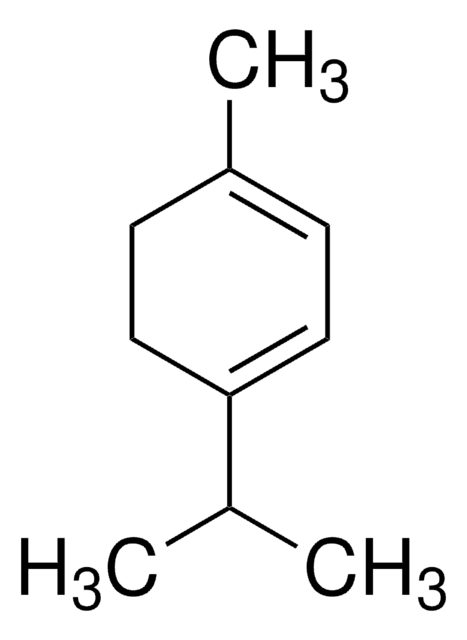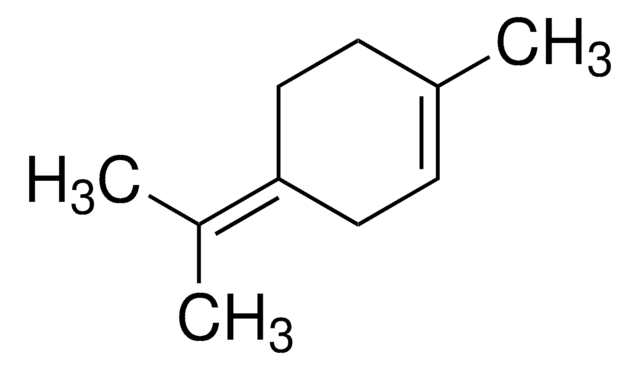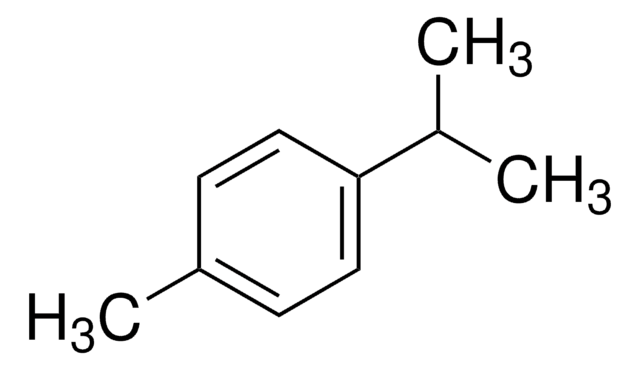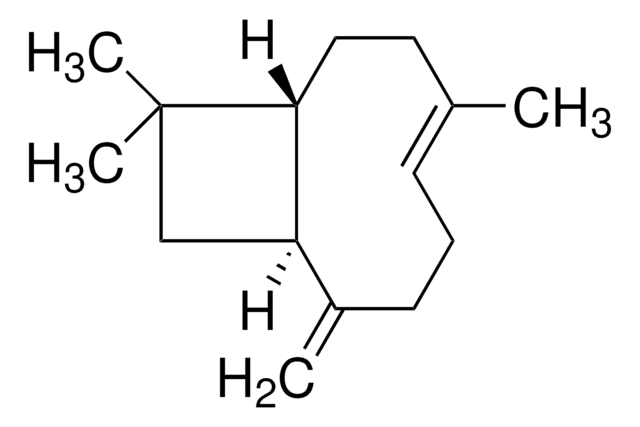Kluczowe dokumenty
W355901
γ-Terpinene
natural, 95%, FG
Synonim(y):
1-Methyl-4-(1-methylethyl)-1,4-cyclohexadiene, 1-Isopropyl-4-methyl-1,4-cyclohexadiene, p-Mentha-1,4-diene
About This Item
Polecane produkty
klasa czystości
FG
Fragrance grade
Halal
Kosher
natural
Poziom jakości
agency
follows IFRA guidelines
meets purity specifications of JECFA
zgodność regionalna
EU Regulation 1223/2009
EU Regulation 1334/2008 & 178/2002
FDA 21 CFR 173.65 (172.515)
gęstość pary
4.7 (vs air)
ciśnienie pary
~0.7 mmHg ( 20 °C)
Próba
95%
współczynnik refrakcji
n20/D 1.474 (lit.)
tw
182 °C (lit.)
gęstość
0.85 g/mL at 25 °C (lit.)
Zastosowanie
flavors and fragrances
Dokumentacja
see Safety & Documentation for available documents
alergen pokarmowy
no known allergens
alergen zapachowy
no known allergens
Organoleptyczne
herbaceous; citrus
ciąg SMILES
CC(C)C1=CCC(C)=CC1
InChI
1S/C10H16/c1-8(2)10-6-4-9(3)5-7-10/h4,7-8H,5-6H2,1-3H3
Klucz InChI
YKFLAYDHMOASIY-UHFFFAOYSA-N
Szukasz podobnych produktów? Odwiedź Przewodnik dotyczący porównywania produktów
Hasło ostrzegawcze
Warning
Zwroty wskazujące rodzaj zagrożenia
Zwroty wskazujące środki ostrożności
Klasyfikacja zagrożeń
Aquatic Chronic 2 - Flam. Liq. 3 - Repr. 2
Kod klasy składowania
3 - Flammable liquids
Klasa zagrożenia wodnego (WGK)
WGK 2
Temperatura zapłonu (°F)
125.6 °F - closed cup
Temperatura zapłonu (°C)
52 °C - closed cup
Wybierz jedną z najnowszych wersji:
Masz już ten produkt?
Dokumenty związane z niedawno zakupionymi produktami zostały zamieszczone w Bibliotece dokumentów.
Klienci oglądali również te produkty
Nasz zespół naukowców ma doświadczenie we wszystkich obszarach badań, w tym w naukach przyrodniczych, materiałoznawstwie, syntezie chemicznej, chromatografii, analityce i wielu innych dziedzinach.
Skontaktuj się z zespołem ds. pomocy technicznej